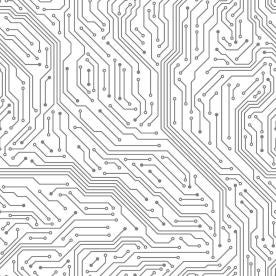On March 29, 2024, BIS issued an interim final rule (IFR) updating and correcting its advanced computing and semiconductor regulations[1] published in October 2023 (which we discuss here in Episode III). This marks the third release of such semiconductor-related regulations since the key regulations were issued in October 2022 (which we discuss here in Episode I).
This IFR is now in effect since April 4, 2024. Interested parties may comment for revisions, corrections, and clarifications no later than April 29, 2024 through here (AC/S IFR) and here (SME IFR).
After reviewing the 166 pages of regulations (yes, that number is correct), we highlight a few of the major changes below as we see them.
Key Takeaways
Broadly, the regulations round some of the edges off of the controls—reducing controls and obligations for certain chip exports and expanding license coverage—but expand the borders of others. However, the changes are largely at the margins of the existing regulations and are not as transformative to the global semiconductor industry sector as the past two October Regulations.[2] They are as follows:
- New License Exception Advanced Computing Authorized (ACA) (carved out from License Exception Notified Advanced Computing (NAC)) will not require notification to BIS for certain exports to Country Group D:1 and D:4, and for in-country transfers to Macau and destinations in Country Group D:5.
- License applications for ECCNs 3A090, 4A090, 3A001.z, 4A003.z, 4A004.z, 4A005.z, 5A002.z, 5A004.z, 5A992.z, 5D002.z, or 5D992.z. are no longer under a presumption of denial for Macau and D:5 countries and will be reviewed on a case-by-case basis.
- NS controls are imposed on .z paragraphs. For example, NS Column 2 would now apply to 3A001.z.
- EUV masks described in ECCN 3B001.j are no longer controlled under NS Column 2. A license will only be required if destined to Macau or Country Group D:5.
- Certain Semiconductor Manufacturing Equipment items still require a license even if being incorporated into foreign-made items that are themselves destined for the development or production of front-end integrated circuit production in a D:5 country or Macau.
I. Corrections to the Advanced Computing/Supercomputer and Semiconductor Rule
New License Exception Advanced Computing Authorized (ACA)
To begin, the Notified Advanced Computing (NAC) License Exception is now two separate Exceptions: the NAC for exports to Macau and country group D:5, and the ACA for exports to D:1 and D:4 (except Macau).[3] As you may recall, these are for exports of integrated chips (ICs) that are not used in data centers, do not exceed the total processing performance threshold, and fall under certain ECCNs.[4]
The NAC Exception will still require notice to BIS and will apply to destinations in Macau or country group D:5, entities headquartered in Macau or country group D:5, and entities with an ultimate parent in Macau or country group D:5. BIS clarified that the notice process requires exporters to give notice to BIS in SNAP-R and wait for 25 days, after which BIS will give notice that the exporter can rely on the NAC Exception and provide a license number.
The ACA Exception will authorize exports to D:1 and D:4 countries, and will not require notice to BIS.
Importantly, both license exceptions will still require written purchase orders.
Refinement of License Review Standards
Additionally, BIS clarified the license review policy under the AC/S and SME end use controls (§ 15 CFR 744.23(d)). There is still a presumption of denial for license applications to Macau and Country Group D:5 and any entity headquartered in, or with an ultimate parent headquartered in, Macau or a destination specified in Country Group D:5. There is a presumption of approval for end users headquartered in the United States or a destination specified in Country Group A:5 or A:6, that are not majority-owned by an entity headquartered in either Macau or a destination specified in Country Group D:5. BIS also stated there would be a case-by-case policy of review for items newly specified in ECCNs 3A090, 4A090, 3A001.z, 4A003.z, 4A004.z, 4A005.z, 5A002.z, 5A004.z, 5A992.z, 5D002.z, or 5D992.z, except for items designed or marketed for use in a datacenter and meeting the parameters of 3A090.a. This case-by-case analysis also applies to Semiconductor Manufacturing Equipment (SME).
Restoring Controls for ECCNs That Contain .Z Paragraphs and New .Z Paragraphs
Further, BIS addressed some loopholes that were created by the previous rulemaking by restoring controls for ECCNs that contain a .z paragraph. In amending ECCNs 3A001, 3D001, 3E001, 4A003, 4A004, 4A005, 4D001, 4E001, 5A002, 5A004, 5D002, and 5E002, BIS mistakenly changed the control reasons for items that contain 3A090 or 4A090 from “national security (NS), missile technology, nuclear proliferation, and/or crime control” to only RS. This created a loophole whereby an item controlled under one of those ECCNs could have an IC controlled under 3A090 or 4A090 to it and could get around a license requirement.
BIS also included a new Note on those same ECCNs referring the public to explaining the license exception within § 740.2(a)(9)(ii) may only be used for .z ECCNs if the destination specified is in Country Groups D:1, D:4, and D:5, or to an entity headquarter in or with ultimate parent in Macau or a Country Group D:5 country. There are also four new .z paragraphs in ECCN 3A001 to distinguish between NS, RS, MT, and NP restriction reasons.
II. Corrections to Semiconductor Manufacturing Items Rule
Lessened Controls for Certain Extreme Ultraviolet (EUV) Masks
Previously, the advanced computing and semiconductor regulations inadvertently controlled certain EUV masks described in ECCN 3B001.j[5] under National Security Column 2.
The new rule removes ECCN 3B001.j from that control but adds it under the § 742.4(a)(4) national security controls and § 742.6(a)(6)(i) regional stability controls. A license will still be required for ECCN 3B001.j if being exported to or within Macau or a destination specified in Country Group D:5.
Clarification of SME End Use Rule
BIS also clarified that certain SME items (for use in “front-end” integrated circuit production equipment as specified in certain Category 3B ECCNs) that are subject to end use controls found in §744.23(a)(4) are to include SME items incorporated into foreign-made items that are themselves destined for a D:5 country (or Macau). The rule creates a new paragraph on indirect exports, reexports, or transfers (in-country).
This is to address certain scenarios where the initial exporter, reexporter, or transferor has “knowledge” that such items will ultimately support the indigenous development or production of SME in D:5 countries (including Macau).
EUV masks as described in ECCN 3B001.j and certain mask equipment as described in ECCN 3B991.b.2 are also no longer excepted from the SME end-use rule.
Clarification of BIS Responses to Certain Public Comments
The new rule also provides further clarification to BIS’s responses to public comments in the October 2023 rules.
SME End Use Rule (15 CFR 744.23(a)(4))
BIS clarified that an (1) item subject to the EAR and (2) exported to a third party Original Equipment Manufacturer (OEM) in a third country, (3) where there is “knowledge” at the time of the export that the item would be incorporated into a foreign made 3B991 (not subject to the EAR) item and (4) the 3B991 item would be sent to a Chinese manufacturer of Category 3 items will require a license under the SME end use rule. The application of the SME end use rule captures the incorporation of Commerce Control Listed items into foreign-made items that are themselves destined for the development or production of specified SME in a D:5 Country or Macau. BIS believes that the term integration which can be found in the definition of “production” includes the physical incorporation of one item into another or the joining of two items.
Advanced-Node Integrated Chips (ICs) End Use Rule (15 CFR 744.23(a)(2))
A commenter asked how far back up the supply chain the licensing obligation extends for an export of an item to a third party for use in developing or producing a whole new foreign-made item that will only later be used in the development or production of ICs at a covered facility. BIS noted that the advanced-node ICs end use rule does not prohibit transactions involving the incorporation or integration of items subject to the EAR into foreign-made items as long as it does not separately trigger a license requirement (under the Foreign Direct Product Rules). The reexporter or transferor must also separately assess whether a license would be required to reexport or transfer the foreign-made item under the de minimis rule.
Restructuring Supply Chains
BIS noted that OEMs which attempt to restructure their supply chains in order to avoid license requirements under the advance node IC end use rule will not work since such restructuring indicates an attempt to evade or otherwise violate the EAR.
More to Follow
We continue to monitor these developments and expect to see additional tweaks and guidance in the future. We will, of course, keep our readers updated.
We welcome your questions and comments at the contact information of the authors.
FOOTNOTES
[1] These regulations are otherwise known as the “Implementation of Additional Export Controls: Certain Advanced Computing Items; Supercomputer and Semiconductor End Use; Updates and Corrections” (AC/S IFR) and “Export Controls on Semiconductor Manufacturing Items” (SME IFR).
[2] We note that although this IFR breaks the tradition of calling all these regulations the “October Rules”, it still unfortunately keeps in line with the tradition of releasing such regulations on a Friday. (Hi BIS – Monday rules please!)
[3] We note that the NAC License Exception before this IFR incorporated the newly created ACA License Exception.
[4] ECCNs 3A090, 4A090, 3A001.z, 4A003.z, 4A004.z, 4A005.z, 5A002.z, 5A004.z, 5A992.z, 5D002.z, or 5D992.z.
[5] j. Mask “substrate blanks” with multilayer reflector structure consisting of molybdenum and silicon, and having all of the following:
j.1. “Specially designed” for “Extreme Ultraviolet” (“EUV”) lithography; and
j.2. Compliant with SEMI Standard P37.






 i
i


